Winter doesn’t have to mean empty pots. When most gardens rest, a few hardy blooms and textured greens can carry the season. I love seeing color and life right at the doorstep; it feels like the garden is still whispering through the cold months. These planters pair tough winter performers with small details that make each one feel considered — a ribbon, a lantern, a few twigs of birch.
Quickly Find Winter Planters
1. Pansies, Spruce, and Fairy Lights

Pansies hold their shape even after frost, which makes them perfect for early winter displays. I like to pair them with small spruce tips for structure and tuck a short string of fairy lights around the base.
At dusk, the lights give the blooms a soft glow that feels more welcoming than festive. It’s a simple combination, but one that works all season long, brightening the view every time I step outside.
2. Hellebores, Ivy, and Birch Twigs
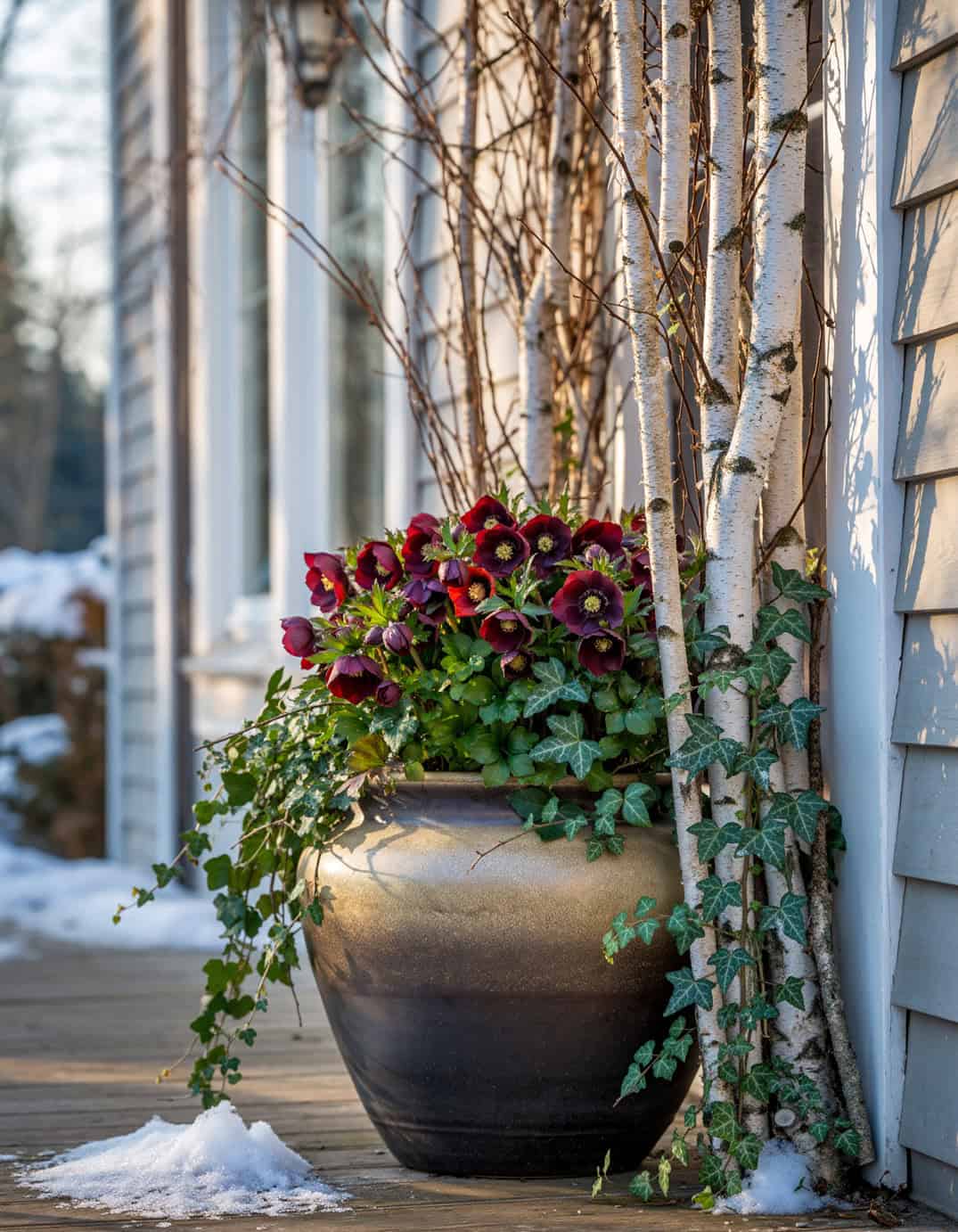
Lenten roses feel like quiet survivors, opening their blooms when little else does. I plant them low, allowing their flowers to nod under the weight of cool air, then add ivy to trail gently over the rim.

To finish, I place a few birch twigs upright through the center. They break the symmetry and catch bits of frost, turning the whole planter into something sculptural without much effort.
3. Cyclamen, Ferns, and Moss
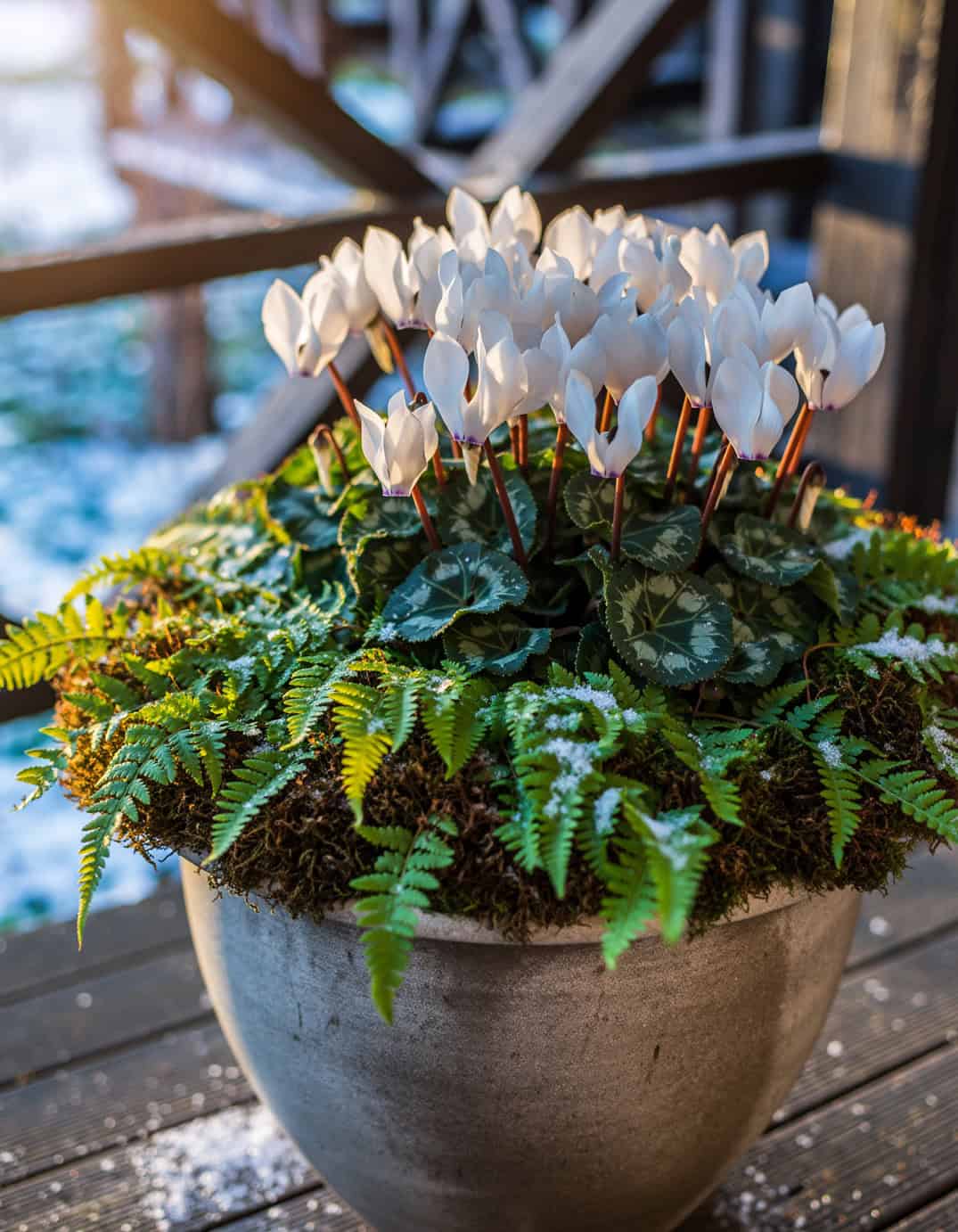
White cyclamen rise like candles from a low bed of ferns, and a top layer of moss keeps everything soft and damp. The result looks almost woodland in character.
I find that the key is contrast — the smooth petals against the rough texture of the moss. It reads natural but refined, and it lasts well through the colder spells if kept in a sheltered corner.
4. Heather, Pinecones, and Frosted Branches

Heather brings color that refuses to fade. Its tight pink spires hold through snow and sun alike. I surround them with pinecones and add a few frosted branches for height and texture.
This combination bridges winter and early spring. When the snow finally melts, the heather still looks composed, and the cones weather to a soft gray that only adds to the charm.
5. Dusty Miller, Kale, and Lantern Accent

Silver Dusty Miller beside ruffled ornamental kale feels timeless — cool tones, big texture, simple form. I like to tuck a small lantern behind them for light and balance.
In the evening, the metal glow plays against the silver leaves. It’s a subtle scene rather than a showpiece, but sometimes that quietness is what makes it stand out.
6. Winter Yellow Blooms, Moss, and Pebbles
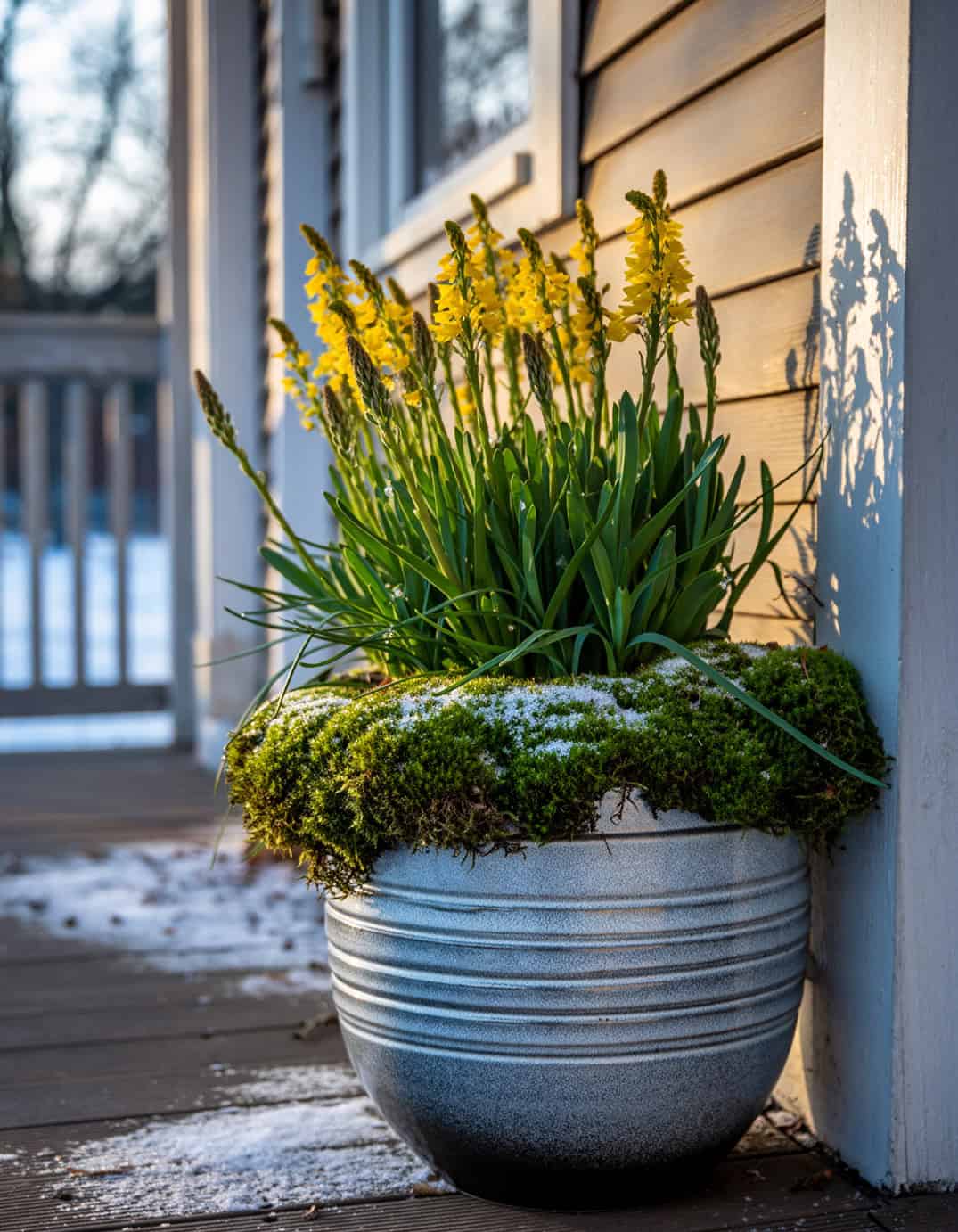
Few things lift winter like a shot of yellow. Winter jasmine spills softly over the edge of its pot, each bloom a reminder that spring isn’t far. I layer moss across the soil and scatter pale pebbles on top.
The pebbles catch water and frost in equal measure, glinting in the morning light. Together, they create a small still life — the sort you find yourself stopping to look at again and again.
7. Primrose, Boxwood, and Ribbon Bow

Primroses feel cheerful in a way few winter flowers do. I plant them close, using boxwood as a tidy backdrop, then tie a thick ribbon around the pot for an easy touch of polish.
That single ribbon changes everything. It turns a row of pots into something intentional and festive without tipping into excess.
8. Violas, Birch Twigs, and Pinecones
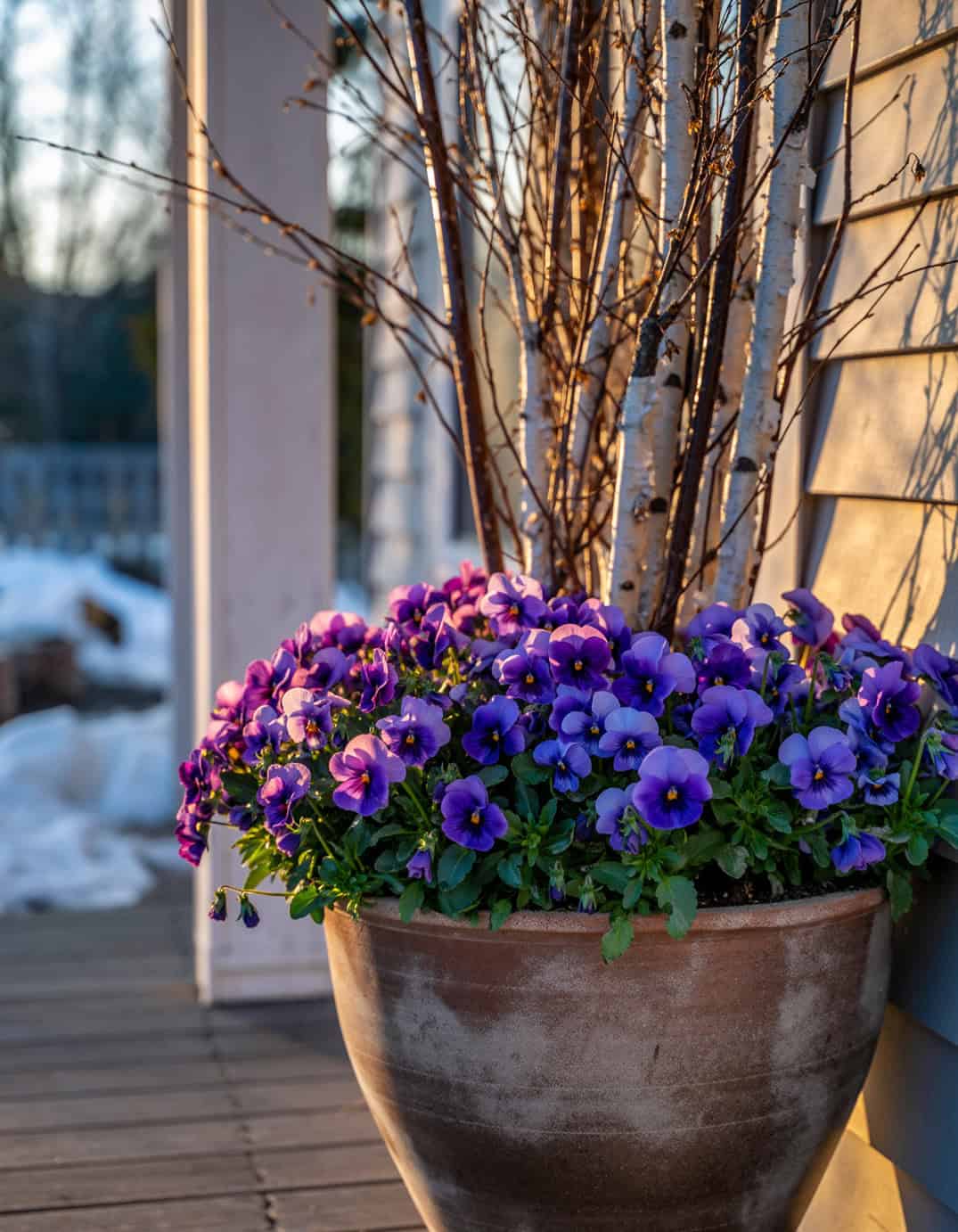
Violas are resilient and endlessly forgiving. I like mixing deep purple and pale cream varieties, then adding slender birch twigs and small pinecones to pull the color upward.
The twigs keep the design open, letting air and light move through it. Even after frost, the little blooms persist, their faces still turned to the light.
9. Snowdrops, Ferns, and a Birdhouse
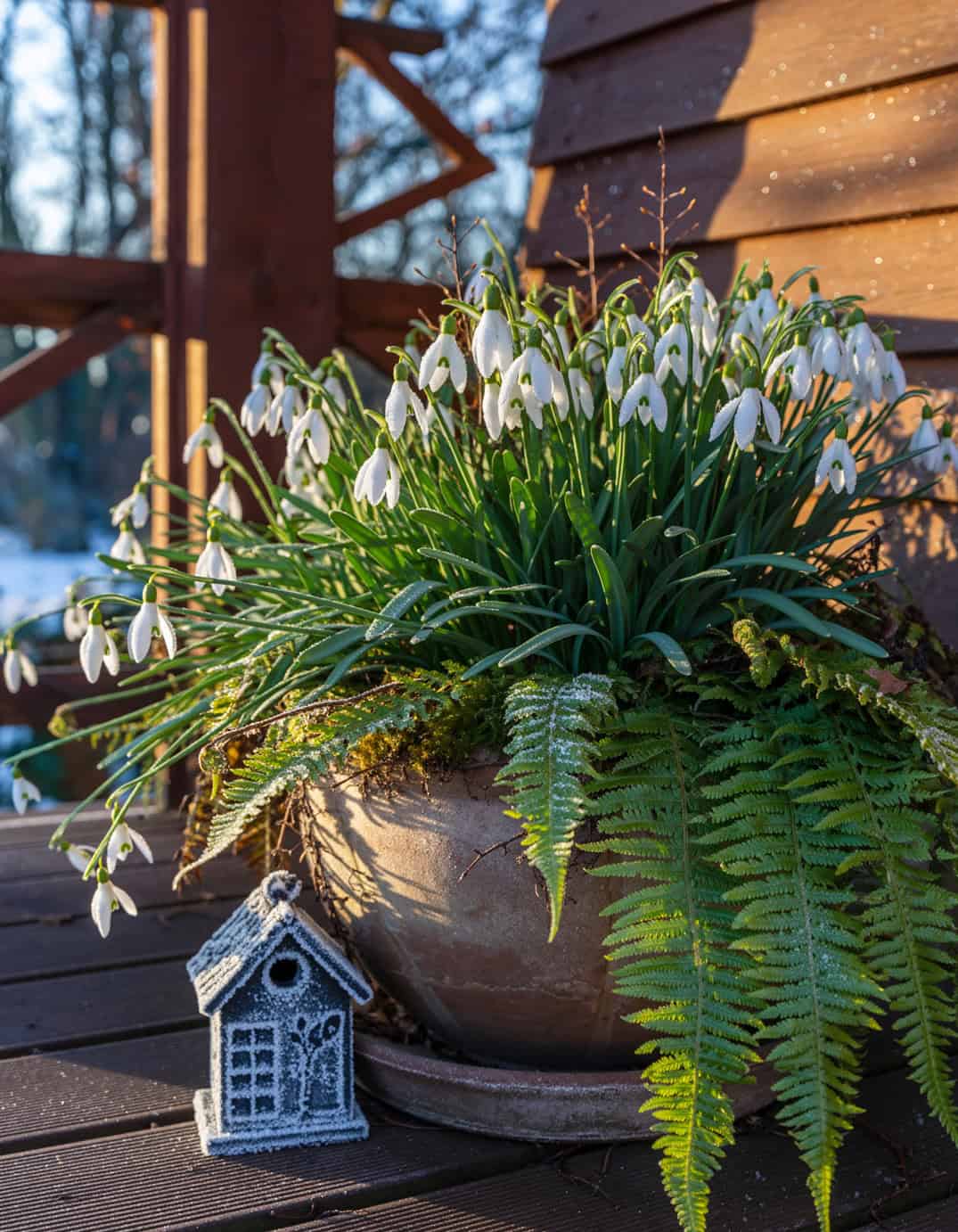
Snowdrops always feel like the first whisper of renewal. I pair them with evergreen ferns for balance and add a small birdhouse beside the pot — a tiny invitation to life even in the quiet months.
The scale of it all feels right for porches and steps. It looks like something that grew there by chance, which, to me, is always the highest compliment a planter can earn.
10. Camellias, Laurel, and Red Berries

Camellias carry such grace in winter. Their thick leaves and porcelain petals look alive even on the coldest days. I add laurel foliage for density and slip a few red berry stems between the branches.
The effect is polished but natural, like the garden dressed up for a winter gathering. It holds color through the grayest skies, giving the porch a small spark of ceremony.
11. Ornamental Cabbage, Pine, and Eucalyptus
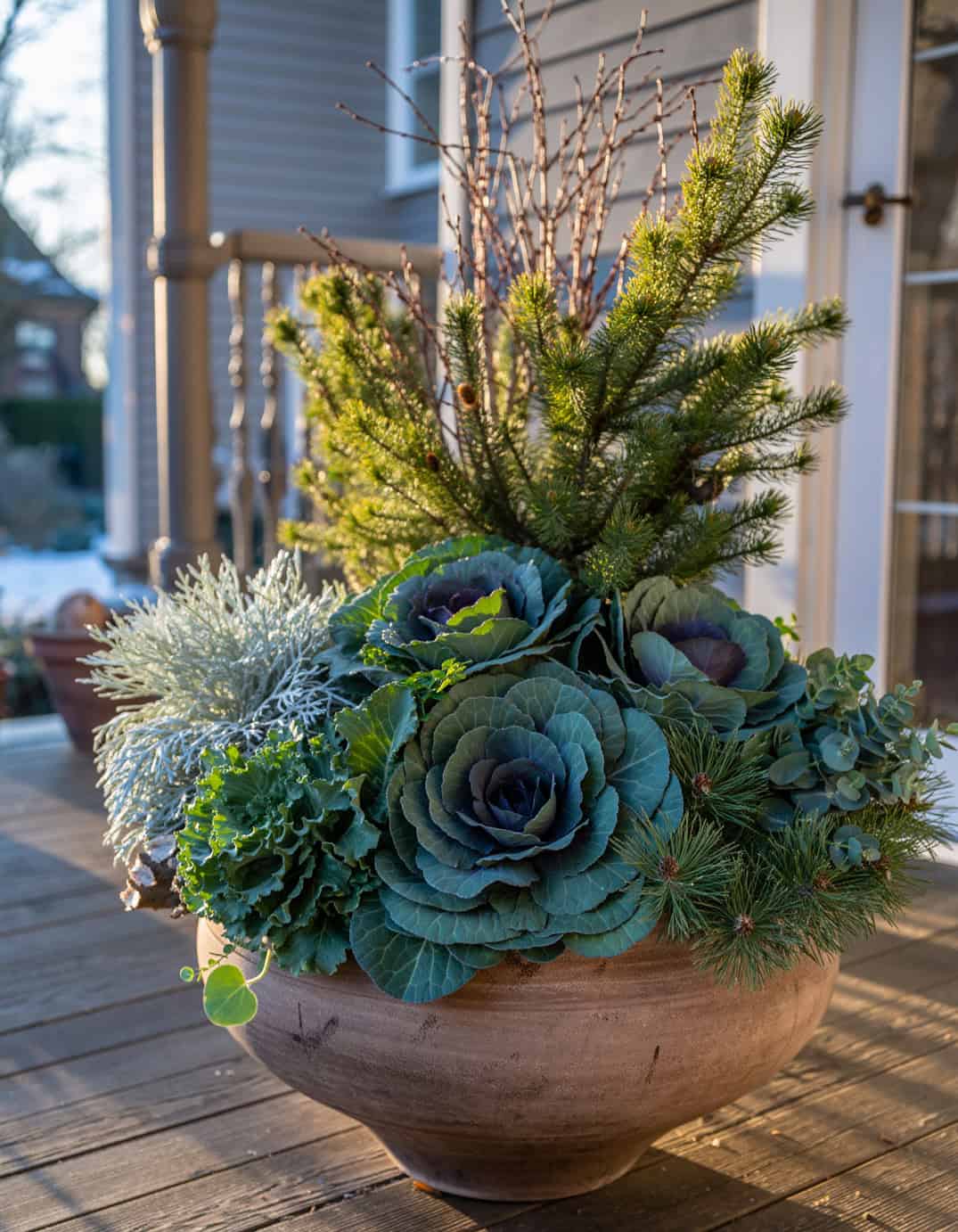
I’ve always liked planters that mix the structured with the wild. Here, ornamental cabbage gives fullness, pine adds height, and eucalyptus threads through with its cool silver tone.
The scent of the eucalyptus comes alive in the crisp air. Together, these plants create a composition that feels grounded yet luminous — green meeting gray in the best way.
12. Christmas Rose, Juniper, and Twinkle Lights

Christmas roses have a gentle confidence; they bloom as if winter doesn’t apply. I set them against a backdrop of juniper for contrast and weave a short string of white lights around the base.
At night, the lights pick out the shape of each flower. It’s not bright, just a soft shimmer that seems to breathe along with the plants.
13. Poinsettias, Eucalyptus, and Gold Ornaments

This one leans festive, but in a measured way. Red poinsettias fill the pot while eucalyptus softens the edges. A few gold ornaments nestle at the base to echo the season.
It’s a good option for entryways or covered porches, where warmth and greenery meet. When the holidays pass, the ornaments come out, and the planter still holds its own.
14. Paperwhites, Cedar, and Birch Logs

Paperwhites grow tall and bright even indoors, but outside they take on a quieter tone. Nesting them among cedar boughs and small sections of birch log gives them context — they feel part of the landscape again.
The mix of texture and scent is irresistible. The cedar smells clean and sharp, while the birch reflects light like pale bone.
15. Sweet Alyssum, Rosemary, and Pinecones
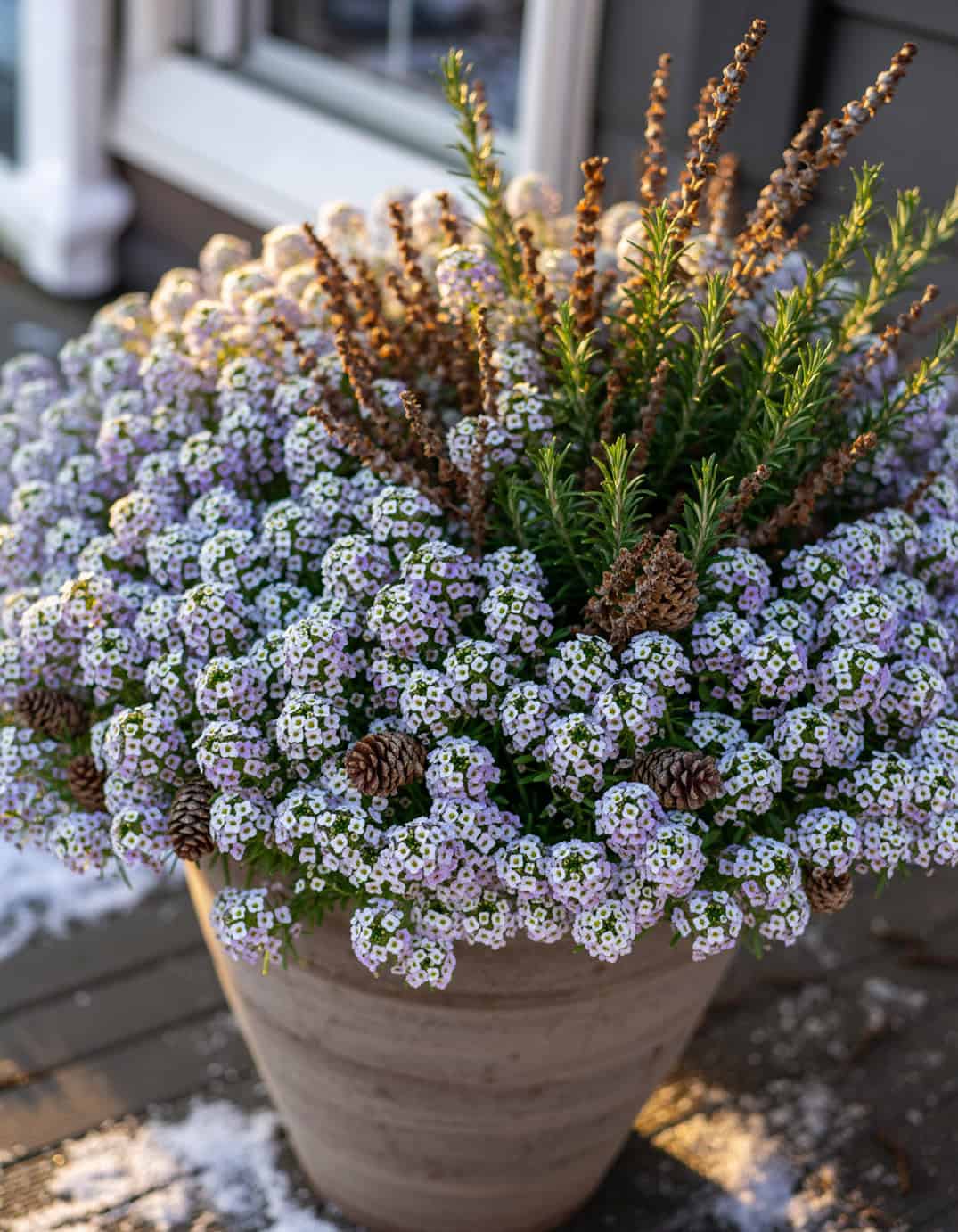
I like to think of this one as a winter herb garden in miniature. The sweet alyssum weaves through the upright rosemary, and a few small pinecones add weight at the base.
When brushed, the rosemary releases a faint warmth that offsets the coolness of the season. It’s sensory, not showy — a quiet pleasure every time you pass by.
16. Winterberry, Spruce, and Frosted Branches

Winterberry never fails to make an impression. Its red clusters feel vivid against spruce greens, and frosted branches frame the whole piece like drawn lines on a painting.
This design works best in a heavier container where the berries can stand tall. The contrast of smooth red and dusty green feels honest to the season — crisp, spare, and full of promise.
17. Tulips, Moss, and Glass Orbs

Early tulips look even better when surrounded by moss. Their stems rise from the soft green surface like something just discovered. Hanging a few small glass orbs from nearby twigs adds quiet motion.
It’s an arrangement that shifts with the light. The glass picks up every change in color, so no two mornings look quite the same.
18. Amaryllis, Pine, and Velvet Ribbon
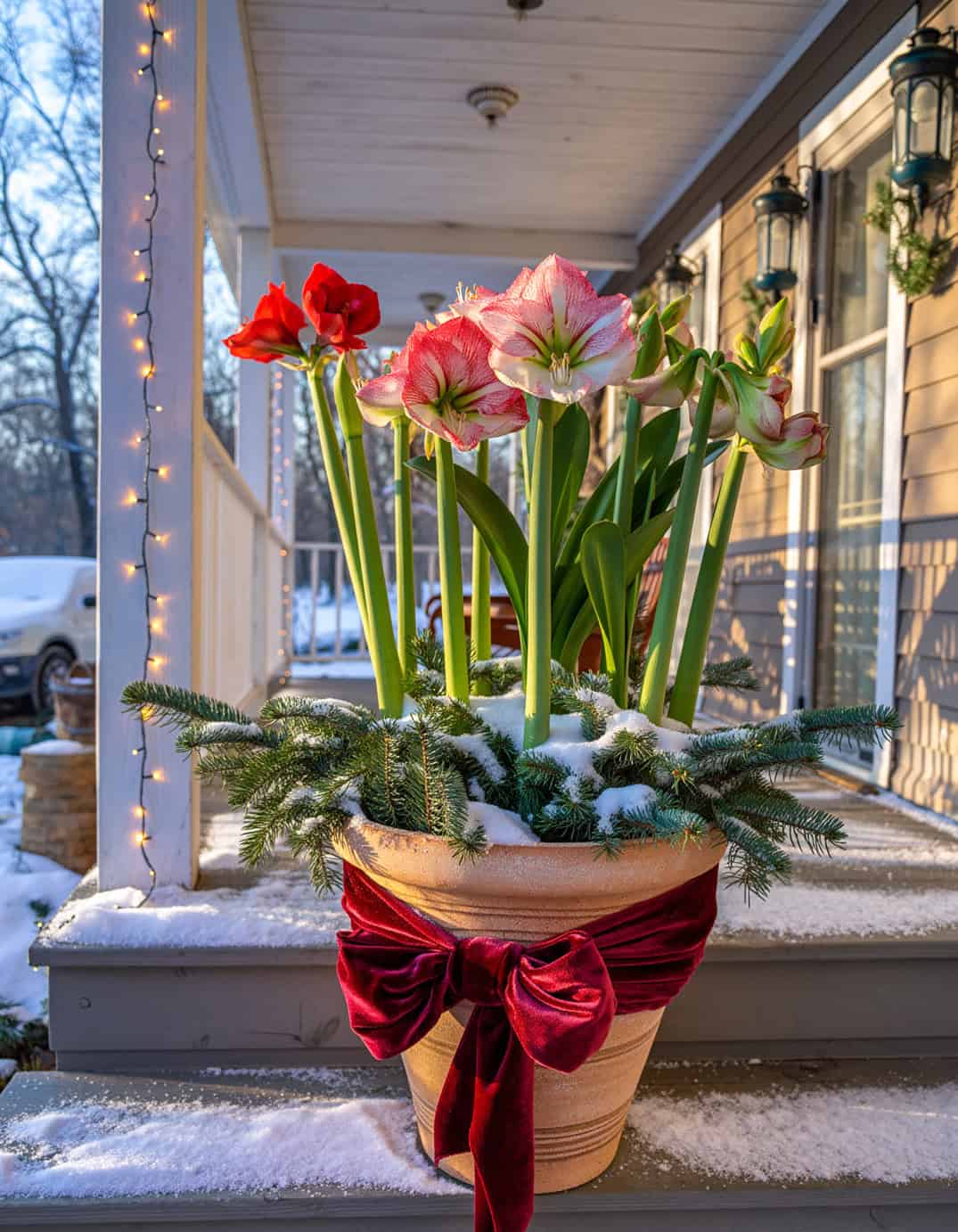
A single amaryllis can carry an entire planter. I pair it with pine needles for texture and wind a velvet ribbon around the pot to echo the bloom’s color.
When the flower opens, it feels like the centerpiece of winter itself — strong, upright, unbothered by cold. Even as it fades, the pine keeps the structure intact, so the whole thing feels alive long after the petals are gone.
Final Thoughts
Winter planters aren’t about resisting the season; they’re about finding form within it. When you combine resilience with restraint, the result feels calm and lasting. These arrangements don’t compete with snow or shadow — they work alongside them.
I like that each of these designs has its own kind of life. Some glow softly at night, others simply persist through frost. Together they remind me that even in the stillness of winter, the garden always finds a way to speak.

